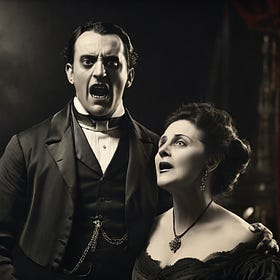It's probably unusual for a programmer to speak up from behind the SCENES. After all, we are relatively self-sufficient, and because we're literally lost in coding, we find little reason to appear in public, especially in such an intellectual environment like this. It's only because Martin Burckhardt convinced me to put aside my reluctance, at least temporarily. So what is the reason? A picture like this, for example:
It strikes me as an unusual composition. And it seems strange to me that this even more unusual image appears on the screen a few moments later:
Putting them in a row, you can immediately see some kind of thematic connection going on here, something to do with the writing and its scripture.




I knew they weren’t the product of my imagination or the code I was writing. Instead, they're the product of a text by Martin Burckhardt, a lecture he gave in the 1990s when Media theory hyped the so-called Visual Turn. In contrast to that, Martin’s lecture dealt with how electricity had intruded into Writing, which he understood as the material from which digitalisation emerged.
This was the focus of this program I've been writing about over the last few weeks, and all these images have emerged from it. As I said, the starting point was not the visual imagination but the spoken word. The program begins by transferring the text’s ideas into metaphors for the visual sphere; then, these metaphors are developed into complex visual concepts in the following program step. Now, this process isn’t entirely straightforward. Artificial intelligence has to be taught that visualization amounts to a metaphorical retranslation into physicality, a reduction often accompanied by a meaning shift. It’s a complete reversal of the normal process because the starting point isn’t what’s visible but what’s invisible. And this reversal is at the core of what Martin described to me as what distinguishes the Medieval conception of the Sign.
Unlike in the Renaissance, the visual sign was not the highest ranking, this was reserved for the thought. Then, there was the spoken word, followed by the written word, which was then drawn or painted on a canvas. The least important part of this progression was what we call reality or the materialization of thought; this sequence precisely describes my program’s architecture. Starting from the text, it’s a matter of translating core ideas into metaphors; these, in turn, then constitute the raw material that pictorial instructions emerge. If there’s one characteristic of this creative process, it lies in the complete absence of the artist. In the beginning, this was still quite visible. Because the OpenAI programmers lacked the mental agility of an Art Historian like Martin, the images all had a certain similarity. Getting rid of the clichéd nature of their formatting was the biggest task - and it took me to the limits of my programming skills.




This made the results all the more satisfying, as the programming created a kind of dream factory. But it doesn’t produce random images; it brings structures into reality because they relate to complex trains of thought that have an inner consistency. If you place them next to each other, the connection becomes even more visible. Or, as Martin's lecture title puts it: Portrait of the Author, Electrified.
That the program unleashes surprising visual ideas and that it’s not uncommon for some detail of the text to be blown up to larger-than-life size is anything but a disadvantage. That was the spark that really got my imagination (or my lack of it) going in the first place. Not knowing what would come out in the end – that's what drove my programming effort forward.
Because the Machine can translate any text, even the transcripts of ex nihilo conversations, into images, we’ve set up a Pinterest page that acts as a chronicle, a stream of consciousness that reflects what’s happening on ex nihilo. You should take a look and see what you think...
Translation: Johannes von Hochheime
Related Content
On Androids and the Future of Humanity
It might be strange being confronted with figures controlled by a foreign entity - even if that entity is your own voice. But looking back a few centuries, it’s easy to imagine how uncanny it felt to people seeing hyper-realistic Renaissance portraits for the first time.
Cyborg Psychology
One of the peculiarities of the Artificial Intelligence Discussion is this conviction that it's only about replacing the human being, while there's hardly a thought given to the fact that what we've put into the world is nothing other than a magic mirror reflection of ourselves- and that this instance will necessarily change our self-image as well.
Unter Gespenstern
Es ist wirklich so eine Sache mit den Gespenstern. Man weiß nie so recht, wo und wie man ihnen begegnet. Und wenn man, wie ich vor vielen, vielen Jahren, eine Einladung an die Bielefelder Universität annimmt, um vor lauter hochrangigen Juristen einen Vortrag über die Entstehung des Rechtssubjekts zu halten, kann man, dem Internet-Meme z…












